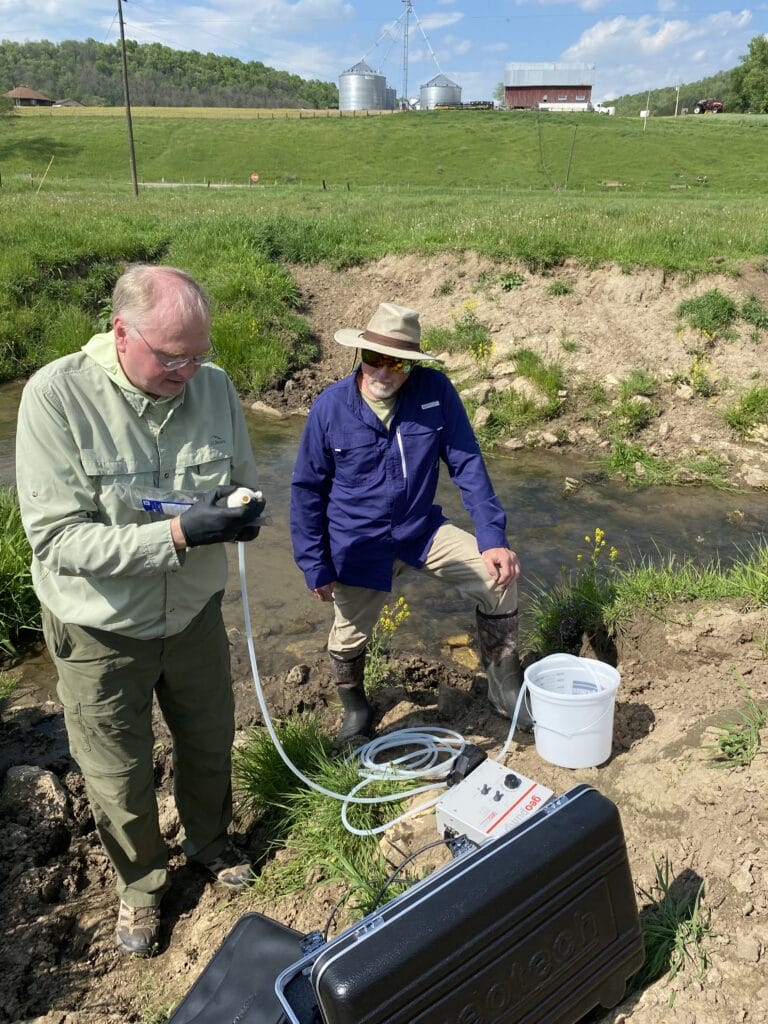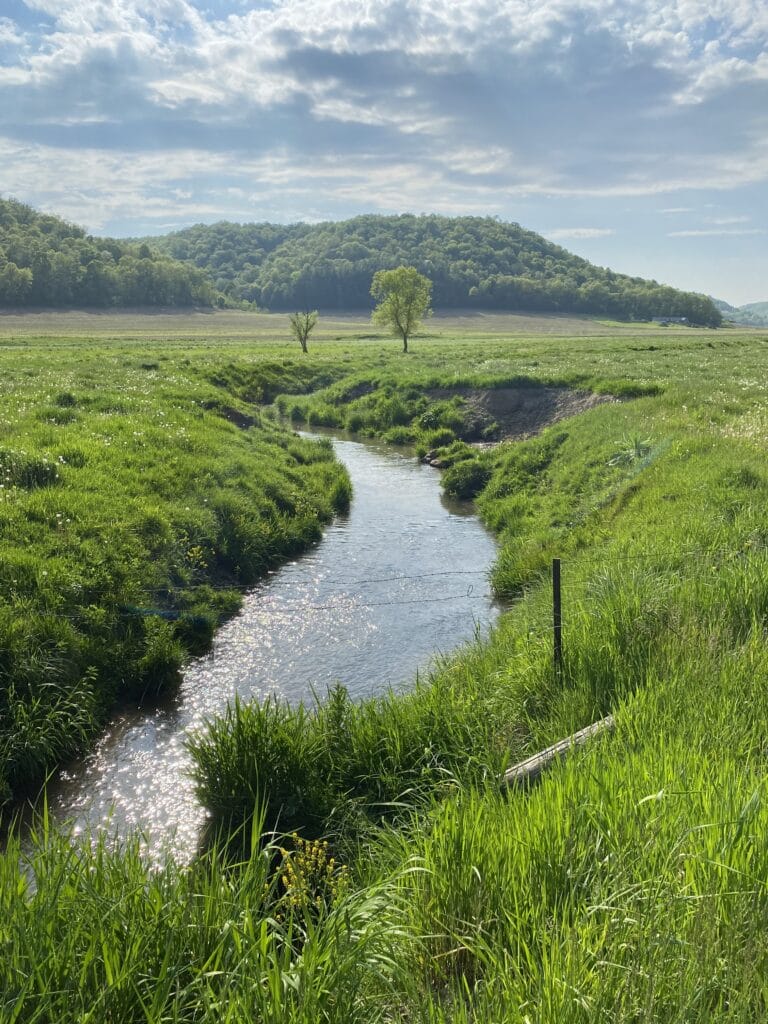In May of 2024, the Oak Brook Trout Unlimited chapter traveled to the Driftless Area for their annual fishing visit. But in addition to the chapter’s usual fishing and stewarding their section of highway near Viroqua, magnanimous chapter member Dave Carlson also offered to give TUDARE a preview of the eDNA sampling methods the chapter has deployed to take samples.
The Oak Brook chapter has a sampling approach meant to help elucidate brook trout activity and history in Driftless watersheds. The approach can also shed light on the presence of other species of conservation interest for a slightly higher lab analysis cost.
eDNA sampling at its most basic leverages existing DNA markers to discover DNA in a water sample that can be positively identified to a species or genus level. Being able to assess the presence of organisms from a simple water sample can be a rapid way to determine if a species is present without intensive sampling to capture the species.

In the case of brook trout sampling, it is ideal for watersheds where brook trout have never been confirmed by agency sampling or where it is unclear how far up in a watershed there is viable brook trout habitat.
The chapter purchased a peristaltic pump that filters a water sample without introducing water into machinery that could contaminate future samples. Operators record how much water is filtered and how long the filtering process took (15-30 minutes). They seal the filter into an individual bag and send it off to the Molecular Conservation Genetics Lab at UW-Stevens Point, where Jared Homola, who provided an excellent presentation on genetics at the 2024 Driftless Symposium, processes the sample for brook trout presence or a more comprehensive meta-barcoding analysis that identifies other species.
TUDARE staff and friends met with Carlson on Harrison Creek, a stream that has only had brown trout captured in the past by DNR, but where anglers have reported brook trout.

The group collected a sample from the stream, which has a a new DNR fishing easement, and hoped to confirm brook trout presence. In early September, results were reported by the lab for the brook trout DNA test.
Unfortunately, no evidence of brook trout DNA was found in the samples from Harrison Creek. Environmental DNA (eDNA) is not a foolproof approach and may be sensitive to lower population size and dilution so the lack of a positive ID from Harrison Creek does not rule out brook trout presence.
The chapter is interested in sampling from known brook trout fisheries with a variety of population sizes to help refine the technique and analysis.



